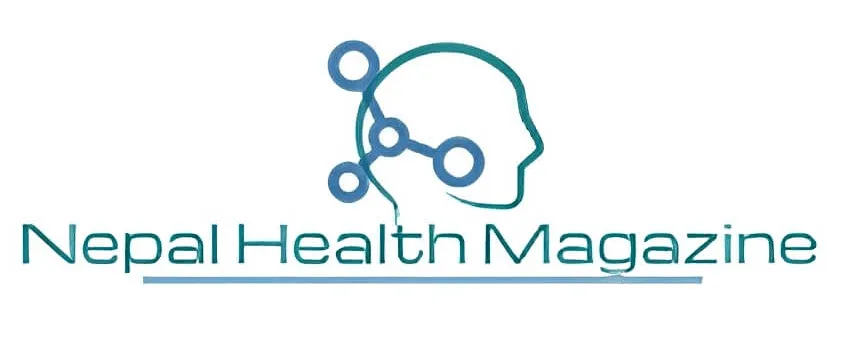Introduction
The Constitution of Nepal states that every citizen has the right to a clean environment (part 3,article 30) and right to free basic health services from the state as well as equal access to health services (part 3, article 35) (NLC 2015). The government of Nepal has focused its efforts in providing good quality of health services to all the people in the country. However, Nepal government is facing different types of challenges associated with communicable and non- communicable disease. One of the major problems is proper management of health care waste (HCW). Poor Health Care Waste Management (HCWM) leads to environmental pollution and carries the risk of infections. Health care waste not only affect the waste generators but also the ‘waste handlers and the general public. One direct effect of poor HCWM is the alarming incidence of nosocomial infections. Recent National Health Care Waste Management SOP’s 2020 [Latest]
As defined by WHO, health-care waste is the by-product of health care that includes sharps, non- sharp blood contaminated items, blood, body parts and tissues, chemicals, pharmaceuticals and radioactive materials (WHO 2019). In addition, it includes the same types of waste originating from minor and scattered sources, including waste produced in the course of health care undertaken the home (e.g. home dialysis, self-administration of insulin, recuperative care). Between 75% and 90% of the waste produced by health-care providers is comparable to domestic waste and usually called “non-hazardous” or “general health-care waste”. It comes mostly from the administrative, kitchen and housekeeping functions at health-care facilities and may also include packaging waste and waste generated during maintenance of health-care buildings. The remaining 10-25% of health- care waste is regarded as “hazardous” and may pose a variety of environmental and health risks (WHO 2017). Hazardous health-care waste can be categorized as “Infectious waste”, “Sharp waste”, Pathological waste”, “Pharmaceutical waste”, “Cytotoxic waste”, “Chemical waste” and Radioactive waste”. Non-hazardous general waste is waste that does not pose any biological, chemical, radioactive or physical hazard (WHO 2014)
According to new global data (WHO/UNICEF 2019) there is no or very limited safe management of health care waste in a large proportion of facilities. The data, representing over 560,000 facilities from 125 countries, indicate that 40% of health care facilities do not segregate waste. In least developed countries, the situation is far worse with only 27% of countries having basic (segregation and safe waste destruction) services.
OBJECTIVES of National Health Care Waste Management SOP’s 2020 [Latest]
HCFs will be able to implement appropriate waste management systems and approaches that can provide benefits such as:
- Protection of public health by reducing the exposure of employees, patients, visitors and the
entire community to hazardous HCWs in the work environment - Environment protection through waste minimization and promotion of environment friendly
technology for safe disposal of HCW - Facilitate the implementation of a proper health care waste management system by providing,
guidelines for federal, provincial and local government as well as user friendly manuals for
the health care facilities - Facilitate compliance with applicable legal requirements (e.g. Minimum Service Standard of HCFs, standard for WASH in HCFs and standard for health institution establishment,operation and upgrade ete.)
- Reduce possible risks through better waste handling; improving infection prevention practices within the health care facility and other health facilities outlets like laboratories.
- Facilitate health facilities to select best environmentally friendly treatment and disposal option based on available technologies in the country’s context.
SCOPE OF THE STANDARDS AND OPERATING PROCEDURES
The scope of this standard and operating procedure document is to support federal, provincial and local government as well as all levels of health care facilities for the implementation of a safe health care waste management system, based on the best available technologies and best environmental practice in the country context. This document is developed with the vision for obligatory compliance by the provincial and local level. The target audience of the guideline are national authorities (federal to local) involved with health care waste management, health care practitioners at all levels (including laboratories), waste management service providers; public health professionals, private sector, veterinary, NGO, CBO, outreach clinic, pharmacies, Medical/ health camp and other relevant stakeholders and individuals involved in health care waste management,
Categorization according to National Health Care Waste Management SOP’s 2020 [Latest]
1. GENERAL WASTE
General HCW, also known as non-hazardous HCW. This waste does not pose any biological,chemical, radioactive or physical hazard and is comparable to domestic waste. It is usually generated from the administrative and house-keeping services of HCFs. Examples of such wastes include general office waste, garden or yard waste, packaging and food waste. These wastes can be composted to make manure, recycled or be managed by the municipal waste services. Researches have shown that general HCW constitutes about 75% to 90% of the total amount of HCW generated by HCFs ( (WHO 2014)). General HCWs are classified into the following categories
1.1.Biodegradable
This category of waste consists of the waste that can be composted. Examples are left over food scraps or garden waste,
1.2 Non-biodegradable
This category of general waste includes all the health care waste, that does not decompose, but of which a rather large volume can be recycled, and remaining waste can be disposed in a sanitary landfill. There are various sub-categories for other general, recyclable, waste. Examples of common sub-categories are bottles and cans, paper, different plastics and glass.
2 HAZARDOUS WASTE
Hazardous waste poses a risk or hazard to human health and/or to the environment. This category of HCW constitutes the waste which needs special attention for handling and management, Researches have shown that hazardous HCWs constitute about 10% to 25% of the total amount of HCWs generated by HCFs. Hazardous wastes are further classified as follows:
2.1 Infectious Waste
Infectious wastes are any wastes which suspected to contain pathogens and that poses a risk of disease transmission. This category includes waste contaminated with blood and other body fluids, laboratory cultures and microbiological stocks and waste including excreta and other materials that have been in contact with patients infected with highly infectious diseases (e.g Isolation ward of Ebola, COVID-19).; or waste from any infected patients in isolation ward:
2.2 Pathological Waste
Pathological waste consists of human body parts, organs and tissues. Examples of such wastes are tissue waste, removed organs, amputated body parts, placentas, blood, body fluids, human fetus, animal and carcasses obtained through medical procedures
2.3 Pharmaceutical waste
Pharmaceutical waste ranges from normal oxidants to highly specific medicines and includes expired, unused, spilt and contaminated pharmaceutical products, prescribed and proprietary drugs, vaccines and sera that are no longer required, and, due to their chemical or biological nature, need to be disposed of carefully. The category also includes discarded items heavily contaminated during the handling of pharmaceuticals, such as bottles, vials and boxes containing pharmaceutical residues, gloves, masks and connecting tubing
2.4 Geno-toxic Cytotoxie waste
Technically, genotoxic means toxic to the deoxyribonucleic acid (DNA); cytotoxic means toxic to the cell; cytostatic means suppressing the growth and multiplication of the cell; antineoplastic means inhibiting the development of abnormal tissue growth; and chemotherapeutic means the use of chemicals for treatment, including cancer therapy. Cytotoxic (chemotherapeutic or antineoplastic) drugs, the principal substances in this category, have the ability to kill or stop the growth of certain living cells and are used in chemotherapy of cancer. They play an important role in the therapy of various neoplastic conditions but are also finding wider application as immunosuppressive agents in organ transplantation and in treating various diseases with an immunological basis. Cytotoxic Drugs are most often used in specialized departments, such as oncology and radiotherapy units, whose main role is cancer treatment. Their use in other hospital departments and outside the hospital clinics and elsewhere is also increasing.
National Health Care Waste Management SOP’s 2020 [Latest]
2.5 Chemical waste
Chemical waste consists of discarded solid, liquid and gaseous chemicals; for example, from diagnostic and experimental work and from cleaning and disinfecting procedures. Chemical waste from health care is considered to be hazardous if it has at least one of the properties like toxic (harmful), corrosive (e.g. acids of pH <2 and bases of pH >12), flammable , reactive (explosive, water reactive, shock sensitive) or oxidizing. Non-hazardous chemical waste consists of chemicals with none of the above properties; for example, sugars, amino acids and certain organic and inorganic salts, which are widely used in transfusion liquids
2.6 Radioactive waste
Radioactive waste in HCFs include materials contaminated with radionuclides, which arise from the medical or research use of radionuclides. Examples includes: radioactive substances (such as unused liquids from radiotherapy or laboratory research), glassware, packages, or absorbent paper contaminated with radioactive substance, urine and excreta from patients treated or tested with radionuclides and sealed sources (containers in which radioactive substances are stored and sealed).
National Health Care Waste Management SOP’s 2020 [Latest]
2.7 E-waste
In addition to the outlined categories, safe management of electronic waste has been a great challenge in health facilities of Nepal, Electronic waste ranges from small testing devices to larger equipment for various purposes. This equipment contains a multitude of components, some containing toxic substance, which can have adverse impact on human health and environment if not handled Properly. Due to improper recycling and disposal practices often these substances are released. With the increasing use of advanced technologies for medical services, generation of waste electrical and
electronic equipment (WEEE) is increasing along with its challenges for proper disposal. Some of ‘the common examples in medical devices are radiotherapy equipment, cardiology, dialysis and pulmonary ventilators, laboratory equipment for in-vitro diagnosis, analysers, freezers, etc.
Read National Health Care Waste Management SOP’s 2020 [Latest]
Download National Health Care Waste Management SOP’s 2020 [Latest]

Hey there, I am Nirdesh Baral, founder of Nepal Health Magazine. I am a Tech geek by passion , Public health practitioner by profession and an Ailurophile by heart and a patriot by birth



